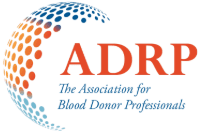Factors associated with first-time and repeat blood donation: Adverse reactions and effects on donor behavior
Full article available for purchase in link provided
Authors
Dalton C. Brunson, Geoffrey A. Belanger, Harry Sussmann, Andrew M. Fine, Suchitra Pandey, Tho D. Pham
Abstract
Background
Blood centers have a dual mission to protect donors and patients; donor safety is paramount to maintaining an adequate blood supply. Elucidating donor factors associated with adverse reactions (AR) is critical to this mission.
Study design/methods
A retrospective cohort analysis of whole blood donors from 2003 to 2020 was conducted at a single blood center in northern California. Adjusted odds ratios (AORs) with 95% CIs for ARs were estimated via multivariable logistic regression on demographics, donation history, and physical examination data. Where appropriate, Wilcoxon-Rank Sum and chi-squared tests were used to determine significance.
Results
First-time blood donors (FTD) exhibited a higher AR rate than repeat donors (4.4% vs. 1.9% p < .0001). When compared with FTDs without AR, FTDs with ARs (FT-AR) were less likely to return (30.0% vs. 47.3%, p < .0001), and, of those who returned, had a higher rate of reaction 20.2% versus 2.8% (p < .001). Factors found to be associated with FT-AR (younger age, increased heart rate, and higher diastolic blood pressure) still correlated positively with AR on return donation, but to a lower degree. FTD who potentially witnessed an AR had a lower return rate (44.6% vs. 47.3%, p = <.001) and donated fewer units (2.38 vs. 3.37, p < .001) when compared to FTD who did not witness an AR.
Conclusion
The AR on FTD increases the AR likelihood of return donation. Longitudinal analysis shows that a time-based deferral policy targeted at FT-AR young donors can reduce the number of ARs while not dramatically impacting the blood supply.
May 5, 2022
Related Resources
Engaging blood donors as advocates Social media preferences and associations with marketing
Background: Various critical medical procedures would become impossible without blood donations—saving lives in emergencies, surgeries, and chronic conditions like thalassemia. Therefore, it seems crucial to enhance donor recruitment and ensure…
Rethinking the role of older donors in a sustainable blood supply
INTRODUCTION Many countries, particularly high human development index countries, are facing the challenge of an aging population.1 For Blood Collection Agencies (BCAs) in these countries, an aging population poses two…


